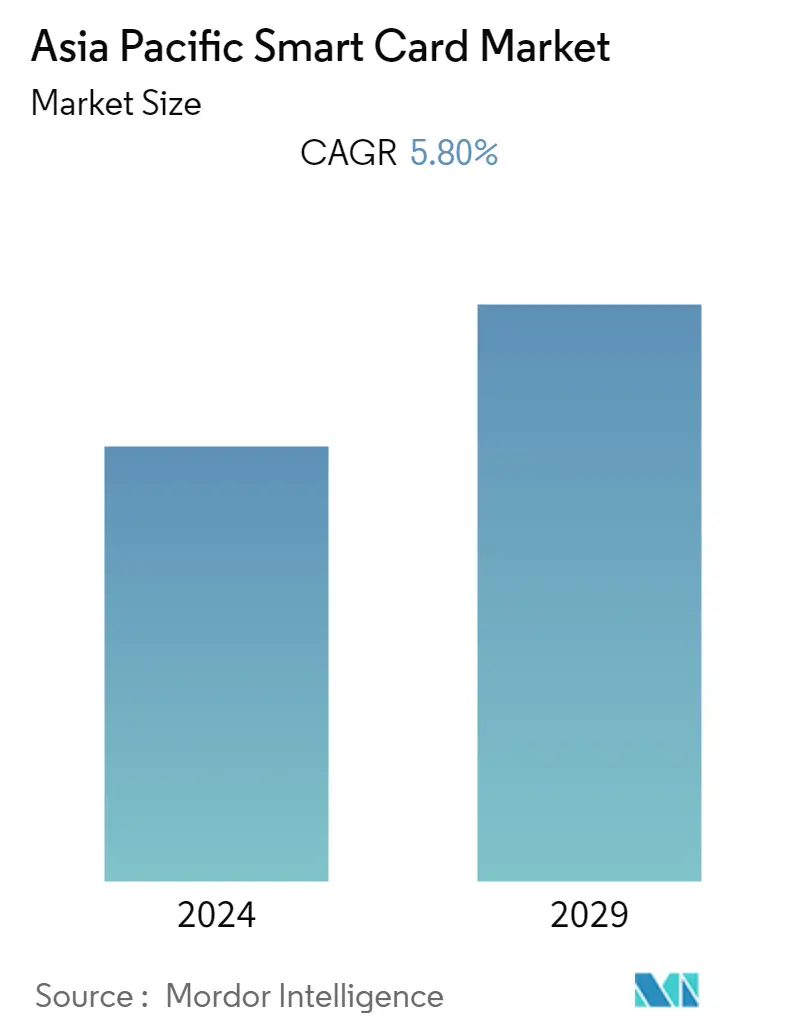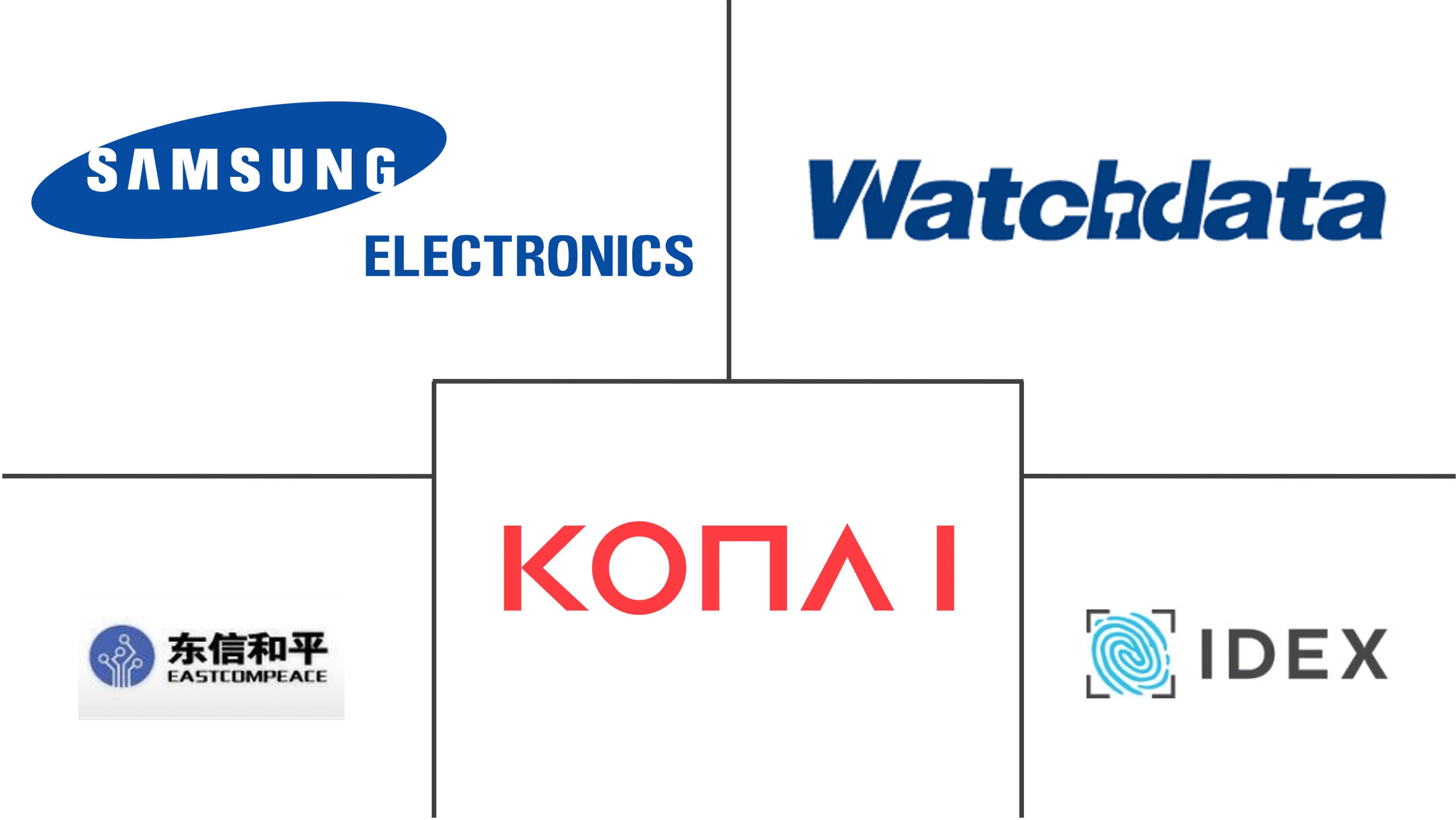Market Size of Asia Pacific Smart Card Industry

| Study Period | 2019 - 2029 |
| Base Year For Estimation | 2023 |
| Forecast Data Period | 2024 - 2029 |
| Historical Data Period | 2019 - 2022 |
| CAGR | 5.80 % |
| Market Concentration | Low |
Major Players
*Disclaimer: Major Players sorted in no particular order |
Need a report that reflects how COVID-19 has impacted this market and its growth?
APAC Smart Card Market Analysis
During the forecast period of 2022-2027, the Asia-Pacific Smart Card Market is estimated to register a CAGR of 5.8%. Improvements in micro-embedded circuits and the growing acceptance of IoT technology drive the smart card business forward. Furthermore, the increasing use of gadgets packed with circuit chips that assist organizations in giving safer payment alternatives, data storage, and authentication to their users is driving the industry forward.
- The increasing digitalization of different government processes and the rising demand for identity cards necessary to access government services create new potential market opportunities. Along with that, the provision of healthcare, licenses, and social benefit documentation of people has resulted in government authorities' introduction of smart cards, hence accelerating the market's growth in the coming years.
- The growing trend of storing data effectively, shifting preferences toward contactless and cashless payments, and digitizing payment processes drive demand for smart cards in healthcare, retail, and hospitality. Additionally, blockchain technology's new customer information security technique and the widespread use of smart cards in the APAC region's most populous nation are projected to provide profitable growth possibilities for smart card producers.
- Also, security and miniaturization are two areas where smart card technology is evolving most quickly. With worldwide migration to higher security EMV banking cards, the newest generation of smart cards is capable of full on-chip cryptography, significantly increasing the security of cards across the industry. In addition, smart cards are increasingly miniaturized into more diverse form factors, such as mini-tags and smart wearables. These trends will continue as smart cards, along with phones or biometrics, are increasingly used as a two-factor credential.
- Additionally, Payment cards are, without even a doubt, essential in everyday life and business. According to the Smart Payment Association (SPA), about 90% of non-cash consumer payments in physical establishments are conducted with cards; in reality, payment cards are essential for obtaining cash. Furthermore, according to the SPA, payment cards facilitate 40-60% of online payments, either directly or indirectly.
- The increased need for a tap-and-pay payment method following the pandemic and the expanding acceptance of smart cards in various industries propel the market forward. Furthermore, high smart card penetration in access control and personal identification applications, rising need for smart cards to access e-government services, and rising demand for online shopping and banking drive smart card market growth throughout the forecast period.
- Furthermore, the COVID-19 pandemic is expected to boost market growth due to consumers' growing need for contactless payment methods worldwide. The expensive cost of implementing electronic point of sale system (EPOS) terminals and the expanding use of mobile wallets and payment applications are expected to limit smart card demand in the coming years.
